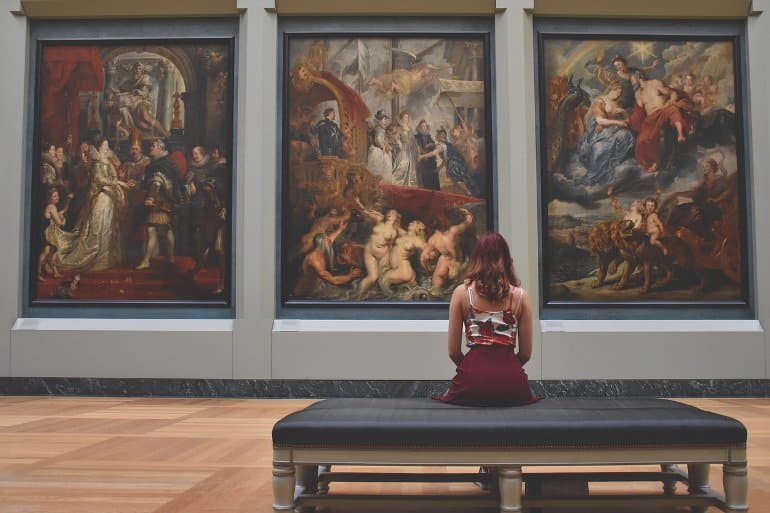Summary: Using a combination of machine learning and neuroimaging data, researchers revealed a neural basis for aesthetic appreciation.
Source: CalTech
It has been said that there is no accounting for taste. But what if taste can actually be accounted for, and what if the things doing the accounting are the neural networks inside your brain?
In a new paper published in Nature Communications, a team of Caltech researchers show how they have revealed the neural basis for aesthetic preferences in humans using a combination of machine learning and brain-scanning equipment.
The work took place in the lab of John O’Doherty, Caltech’s Fletcher Jones Professor of Decision Neuroscience, and builds on research published by that lab in 2021. In that previous research, scientists trained a computer to predict volunteers’ taste in art by feeding it data about which paintings the volunteers liked and which they disliked. With enough training, the computer became adept at correctly guessing if a person would like a Monet or a Rothko, for example.
That act of liking or disliking a piece of art seems so innate and occurs so instantly and seamlessly in our brains that few of us have probably taken the time to wonder why or how it happens, but aesthetic preferences have been the subject of philosophical discussions for hundreds of years.
“When you see a picture, you decide immediately if you like it or not, but if you think about it, this is really complicated because the input is very complex,” says lead author Kiyohito Iigaya, formerly of Caltech and now with Columbia University.
“This is actually a very open question, and we haven’t really known how the brain manages to do it. So, we were wondering if we could understand it using a computational modeling method.”
That method involved having volunteers rate paintings (as many as a thousand) over the course of four days while their brains were scanned with a functional magnetic resonance imaging (fMRI) machine.

Those brain scans and the volunteers’ ratings of the paintings were fed into a machine-learning algorithm, along with the output of a neural net trained to examine the paintings for qualities like contrast, hue, dynamics, and concreteness (whether the painting is abstract or realistic).
The data the team collected showed that areas within the visual cortex, the part of the brain that processes visual input, are responsible for analyzing those qualities. An area in the front of the brain known as the medial prefrontal cortex (mPFC) is responsible for assigning a subjective value to them.
Basically, the brain breaks a piece of art down into its essential qualities, and then decides whether those qualities are pleasing or not. This is more or less the same way the brain decides if it likes food or not, according to another study conducted by the O’Doherty lab. That study found that the brain analyzes a food according to its protein, fat, carbohydrates, and vitamin content, and then determines if those qualities are pleasing.
“What they found is that the brain integrates those different nutritional features to produce the overall liking of food,” Iigaya says. “That’s actually an inspiration for our work.”
In their paper, the researchers say their findings suggest that this “value construction” system may be widespread throughout the brain and may explain many kinds of preferences.
“I think it’s amazing that this very simple computational model can explain large variations in preferences for us,” Iigaya says.
About this art and neuroscience research news
Author: Press Office
Source: CalTech
Contact: Press Office – CalTech
Image: The image is in the public domain
Original Research: Open access.
“Neural mechanisms underlying the hierarchical construction of perceived aesthetic value” by Kiyohito Iigaya et al. Nature Communications
Abstract
Neural mechanisms underlying the hierarchical construction of perceived aesthetic value
Little is known about how the brain computes the perceived aesthetic value of complex stimuli such as visual art.
Here, we used computational methods in combination with functional neuroimaging to provide evidence that the aesthetic value of a visual stimulus is computed in a hierarchical manner via a weighted integration over both low and high level stimulus features contained in early and late visual cortex, extending into parietal and lateral prefrontal cortices.
Feature representations in parietal and lateral prefrontal cortex may in turn be utilized to produce an overall aesthetic value in the medial prefrontal cortex.
Such brain-wide computations are not only consistent with a feature-based mechanism for value construction, but also resemble computations performed by a deep convolutional neural network.
Our findings thus shed light on the existence of a general neurocomputational mechanism for rapidly and flexibly producing value judgements across an array of complex novel stimuli and situations.







